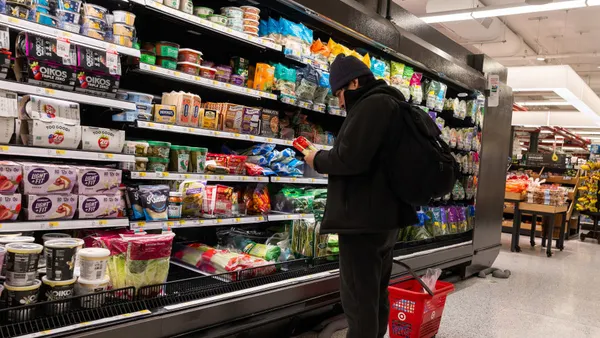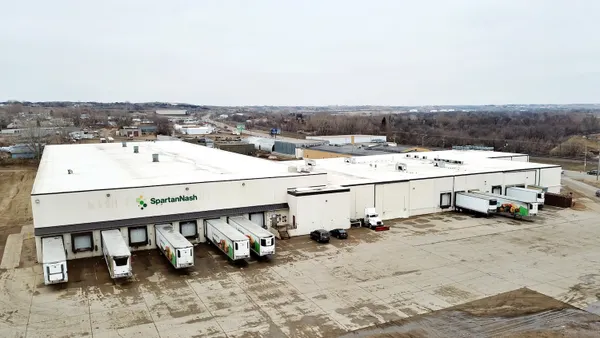Dive Brief:
- Amazon is trying out its cashier-less technology in a space formatted like a larger store in Seattle, The Wall Street Journal reported.
- The paper noted that while the technology performs well in smaller formats like its 2,500 square foot Amazon Go stores, higher ceilings and a wider selection of products in a bigger location could make adoption more difficult.
- Despite saying it has no plans to add cashier-free checkout to Whole Foods, The Wall Street Journal noted that if the company can get the technology to work in a bigger setting, Whole Foods would be a logical next step.
Dive Insight:
If a recent Bloomberg report touting 3,000 Amazon Go locations is to be believed, the e-tailer has really big plans for its cashier-free convenience stores. But do those plans include an eventual grocery rollout for just-walk-out technology, as Amazon calls it?
After some early hiccups with its cashier-less Go store in Seattle, Amazon has brought the technology to locations in Chicago and San Francisco, with another location in the works in New York City. Amazon Go, which opened its first store to staff in 2016 and the public in January, has averaged 2,500 square feet or less in size. Each location has carried an assortment of products much like a convenient store, with groceries, beverages and other prepared foods.
Expanding the technology to a bigger-sized store seems like a logical next step for the web giant. But it remains to be seen how Amazon's test of cashier-less technology will perform on a bigger platform where it will need to factor in a host of challenges like more products and consumers, taller ceilings and unique display options. Implementing just-walk-out technology inside larger stores with all the equipment needed is also likely to be expensive. Yes, Amazon has deep pockets and is willing to experiment, but it won't move forward with anything that isn't truly scalable.
Amazon may have little choice, however, with competitors aiming to match and even surpass just-walk-out technology. Juniper Research estimates cashier-less transactions will reach $78 billion by 2022, up from an anticipated $9.8 billion in 2017. Similar to Amazon, several other ventures are entering the space, meaning the Seattle company can't afford to take its time. Zippin, which is focusing on smaller, c-store spaces, has already opened a test store of its own in San Francisco. Trigo Vision touts its ability to scale up to full-size grocery store dimensions, and Standard Cognition has announced plans to open a pilot cashierless store in San Francisco.
These technology companies are likely to partner with retail chains that compete with Whole Foods. While Amazon said it has no plans to bring this technology to Whole Foods that average about 40,000 square feet, it may be strategically downplaying the idea. Moreover, if the technology giant is in fact working on this technology for a bigger store it makes sense to introduce it to Whole Foods. Few, if any, retailers that compete with Amazon, like Walmart or Target, are going to be willing to help the grocer.
Shorr Packaging found 75% of consumers would be interested in shopping at an Amazon Go store if one were located nearby. It's possible the tech-savvy consumer knows what to expect at Amazon Go because that's what is was created for, but whether they would be willing to embrace a similar tactic at Whole Foods is far from certain. This also cuts to the central tension between Whole Foods' specialty roots and the mainstream ambitions Amazon clearly has for the chain. Whole Foods, at its core, is meant to be an experiential store experience — not a quick, get-in-get-out trip.
Retail stores have long touted customer service as giving them an advantage as more people move online. Shoppers needing help getting roast beef sliced to a certain thickness, a melon of a specific size or finding a variety of cheese may be less willing to abandon the customer engagement that makes a brick-and-mortar store so appealing. Amazon may find that many Whole Foods customers, especially an older audience, will be reluctant to give cashier-less stores a try.













